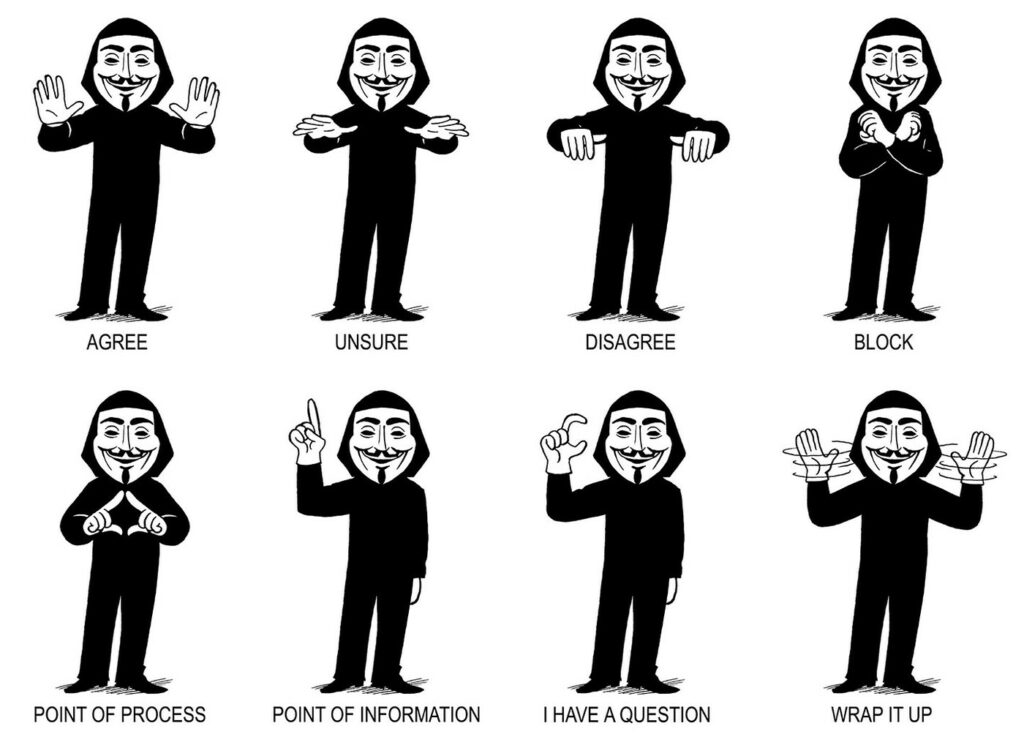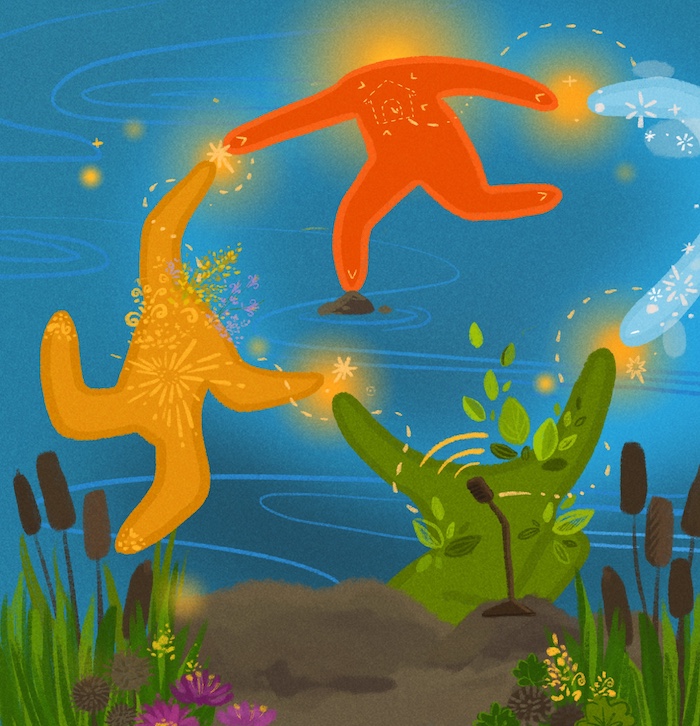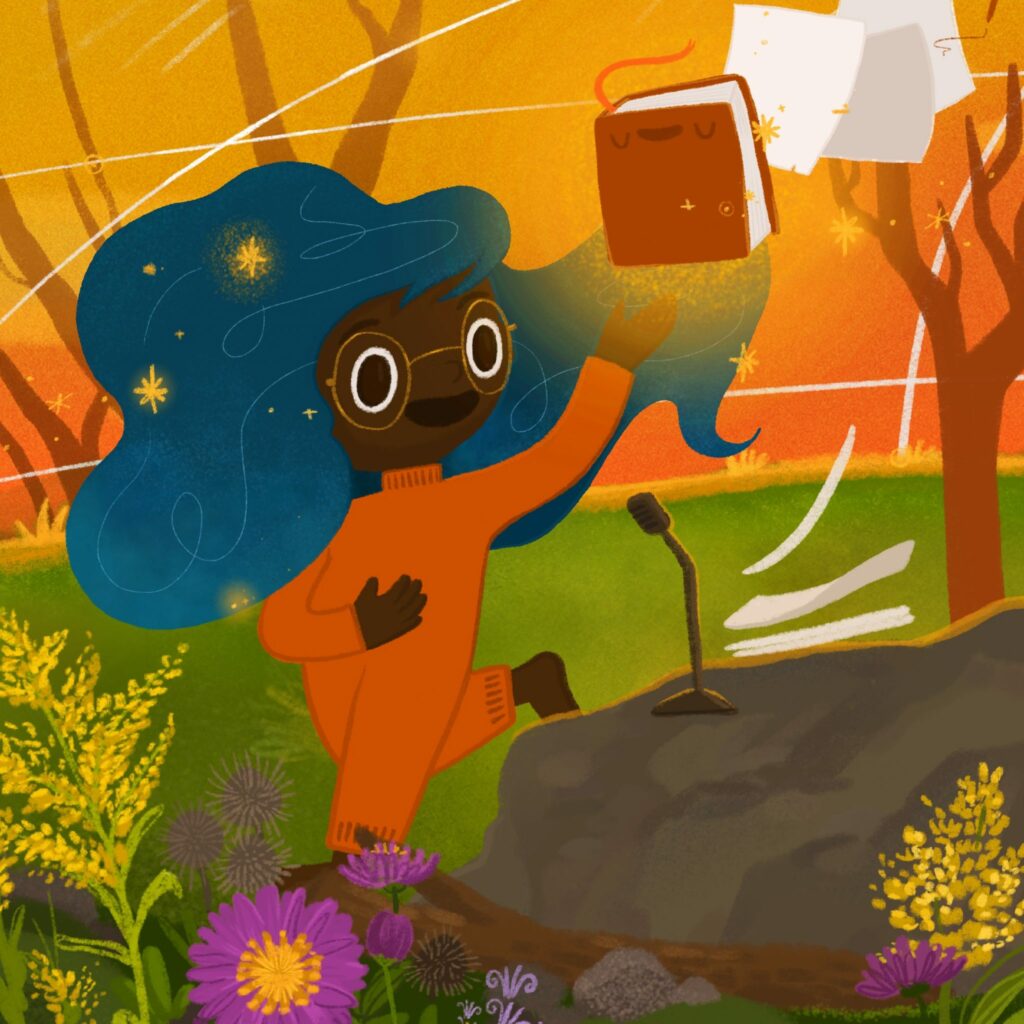Julian: In an early passage of There There, you write: “Being Indian has never been about returning to the land. The land is everywhere or nowhere.” What did you mean by that?
Tommy: I am enrolled in the Cheyenne and Arapaho tribes. But we’re specifically Southern Cheyenne. That’s the difference between Northern and Southern Cheyenne. Difference between Montana and Oklahoma. And then even within that, we know that we’re Suhtai which is—there’s Tsitsistas and Suhtai are two different aspects of Southern Cheyenne history. Growing up in the city knowing that and then working in the urban Native community for so long, it’s just not something that was recognized. Just like tribes become other tribes and join with other tribes and get new names. There was this whole experience of Native people living in the city that I was able to witness and be a part of. And it became its own thing to me. Not that it should be its own tribe, but it should be able to be considered. If people are in the city for over sixty or seventy years, and you still have to think of Indians as belonging to the land.
And I was basically just speaking against the idea that the authentic Native experience has to do with the land. And then also at the same time wanting to really ground the experience of living in the city as an Earth-based experience. A lot of times our relationship to the land, or reality is as if we’re aliens. Because it’s so steeped in Christianity and this idea that we hold dominion over the Earth. So God gave us the Earth and planted us on this big planet. And then we control it. And that’s not really like a holistic or a Native worldview and way of thinking of relationships and your relationship to the Earth. So I was trying to make a city feel more like something that you can relate to. Like anybody would with the land.
So trying to say that it’s not about returning to something that was before, like where you’re supposed to return to history where we come from. But the land is right there, and people who have been living there for a long time and have histories with cities. So really just trying to make that hit home and sort of define that as something that the reader going into these urban Native lives can try to understand in a short amount of time at the beginning of the book.
Julian: You just touched on this, but what do you think about the idea that Indians are the “original environmentalists”—about Natives being closer to the land and nature?
Tommy: Well, I think it goes back to the Christian thing, or the religious thing, the worldview thing. And it’s not that we are out there hugging trees because we care about the land in some mystical way. It’s actually the way you think of relationships and reality. And people steeped in Christianity, even if they’re not Christian, there’s a lot of thoughts embedded in American thought and being an American that automatically are tied up with Christian ideas. And so I think Native people—even though there’s plenty of Christian Natives—the Native worldview is one that has to do with considering all your relations. And not considering yourself in some hierarchy that you are above everything else. And like I said before, holding dominion over the Earth. But you are—I hate the word stewardship, but there’s a relationship that has to do with a non-hierarchical system. That, for Christians, is a natural way to think of their God-given place on Earth.
And for Native people, it’s just—I don’t want to speak in a pan-Indigenous way, but if you were to differentiate between the two, Native people and non-Native people, even. But that’s not totally true. But white Americans—the big difference, even though we have a lot of probably specific things that make us different, the big one is this worldview, and the way that we relate to reality. I hate to even say the Earth. It’s really your relationship to reality. That happens to be the land because that’s where we live. But it’s not like some mystical Indian Earth thing. It’s reality. It’s a philosophy.
Julian: Yeah, and being a good relative, being a good homie—basically that kind of idea. So you’ve kind of touched on this a little bit, but do you think that the urban experience, which is by most statistical measures, the majority Native experience, do you think that that requires a different conception of what we mean by “land” and Native people’s relationship to it? Do you think we need a more expansive definition of what the land is?
Tommy: Well, I think it’s hard to separate the idea of land from nature. And it’s hard to look at a building and see it as a part of nature. A rural experience, like where I live now and the way people experience reality, like driving more often, further distances to get to places and being very compact and inside the insides of things (like in buildings)—it’s a different experience of what land is. I don’t think of the city experience as being different than; I relate to it as the land. But it’s not… This building’s not a tree, and we can’t think of it that way either. So it’s all very convoluted. It’s a philosophy that I have cultivated just from having that relationship with the city. And I think that’s what it comes down to. It’s like people’s relationship to the land in the past and having sort of ancestral land is like, you get to know an area that becomes home in a way that you internalize it and you respect and love it because it’s so familiar to you.
And you have that relationship to it because you spend your time there. That’s the area that you spend your time in. And that’s why people have a tight relationship to the land. It’s familiar to you. And so that’s how I feel about Oakland and the city. In my mind I can walk… I know it so well, in my imagination, I can walk through every part of it and really see it. And that’s a relational thing. And that’s a feeling of belonging and a feeling of home. And I think when it comes to land and Native people’s relationship to land, a lot of that is related to home and having a place that you belong. And having ways of doing things that go back in your family that have to do with the land and the animals there. Or the bus route that your dad took to go to work. These are all things that have to do with belonging to a place.
Julian: I remember when I was growing up, I remember sometimes the drum group at the Intertribal Friendship House in Oakland would set up at some of the local pow-wows under the name “Hyphy Boys.” Which was a reference to the local hip hop scene of which they felt they were a part. Which was partially coming out of Black and Latino Oakland, which was also part of the Oakland that urban Native people were moving through even though most people didn’t really see us there. So yeah, I think that you’re spot on with all that.
Tommy: And also a lot of times the reference to land is a reference to a reservation. And a lot of times that’s not the homeland, that’s not the ancestral homeland of most Native people. Some people ended up being able to stay where they were. But for the most part, you’re referencing a different piece of land that you were removed to. And that’s a whole different kind of belonging. But in the same way that people now own the reservation land as their own and have that relationship to it, that’s the same approach I was trying to have to the city.
Julian: Right. You’re displaced and dislocated to the city, but then the city also becomes what you are Indigenous to.
Tommy: Yeah.

Julian: You once told me about a character that was in an earlier draft of There There, who was a bit of a doomsdayer. Sort of like an apocalyptic prophetic figure. Can you say a little bit more about that character?
Tommy: I’m not sure if I’m remembering. Was it a guy under a freeway?
Julian: Yeah, yeah.
Tommy: Yeah. I was just… I don’t know when, somewhere writing the book. Because I’ve heard it a lot now in the past few years. People talking about Native people being post-apocalyptic. And thinking of the apocalypse has always been on my mind because I grew up in a Christian Evangelical Church off School Street. Do you know Shiloh? In East Oakland.
Julian: No, I don’t.
Tommy: Anyway, crazy people who thought the world was going to end. And I was swept up in it because that’s how I was raised. And just got to thinking about Native people having a relationship to all this talk of apocalypse is like, we’re from a people that survived the end of their world essentially, and started over. And thinking of us as post-apocalyptic. So this guy that I had under a freeway, part of this character who didn’t ultimately make it into the book named Billy Two Rivers. He’s just being yelled at, by this guy under the freeway in San Leandro. In my mind, it was over by Rasputin’s. You know that freeway overpass? And it’s a young Native guy hearing this old Native guy kind of talking this way. Referring to himself as a ghost and then referring to himself as post-apocalyptic. So it wasn’t a major scene, but there were a lot of other things to that character.
Julian: Why did that scene and character ultimately not make it in? I guess there’s already a lot of characters.
Tommy: I mean, I think it came down to—and this is the same feedback I got on the latest draft of my next book—the editor’s like, “We need to focus it.” And so that comes with who’s central to the story, and what role are they playing? And so this character was a little bit more periphery and that’s why the cut.
Julian: So, Oakland, which is where we both grew up, has long been the center for lots of movements for justice, whether you’re talking about the Black Panther Party, the Occupation of Alcatraz. More recently, when I was in high school, the police killing of Oscar Grant, and the response to that in the community. How has that history of the place shaped your thinking and writing about it?
Tommy: Well, I think some of that is probably influence that is unconscious. And the swell of pride of coming from Oakland comes from knowing about all these movements. And Oakland is tough and real. And I think more so the fact that there’s so much history in Oakland. And specifically that Native side of it, and the Occupation of Alcatraz. And that I didn’t see it in a novel was really striking to me. And I already knew I wanted to write about Oakland, and through my experience. So it had more to do with the absence of Oakland in literature. And just really wanting to represent something that I knew belonged.
To novelize something is to—there’s a lot of imaginative leaps, but for the Oakland experience, there was so much that was just right there that I felt belonged in the pages of a novel. So I was just inspired by the fact that so much has happened in Oakland. And like I said, growing up there and working in the community, and hearing a lot of stories and working on storytelling projects. It was the absence of that being represented in literature was just one of the things that made me want to write into it.
Julian: Do you think that you have a responsibility to a place, a community, a history? How do you think about your relationship to the material and stories that inspire you?
Tommy: I think specificity is universal. And the only way to get deep into specificity is to write. I mean I hate the “Write what you know,” cliché advice, writer advice. And I don’t mean that. But I’ve led writing workshops and people try to generalize because they think that’ll make their story more universal. I don’t know that there’s a responsibility, but I think it’s smarter to write it about where you come from. You can get inside those very specific, intimate details about a place and about the people that live there. And so I think it’s just a smarter decision on the page to get as specific as possible about the world that you’re building.
And not generalizing because you think you don’t want to isolate people because they don’t know what that experience is like. That’s actually why we go to novels—to walk in the shoes of characters we don’t know. I mean, that’s part of why I’ve always gone to novels. Sometimes I’ll not want to read stuff where I already know the world and the people. I’d rather read something that is unfamiliar to me. So getting specific, I think maybe writing about the place you come from it may not be a responsibility, but I think it’s a smarter writing decision.
Julian: What sort of impact, if any, do you hope that your writing has on the world? Or do you even think about it that way?
Tommy: I’ve seen in Native spaces people kind of light up around being seen. And say stuff around, being seen in the pages. And I think if I could inspire anyone to try to write, or feel like they can. Because as you know, growing up, there’s not very many Native figures, heroes that are visible and see a lot of success. And I think it’s important for Native people to see that. So if I can be a door, whether that’s through somebody just seeing that I did it, or actually helping other Native writers at the Institute of American Indian Arts. If my success can mean more success for more Native people, that’s the most I could hope as far as impact goes.
Julian: What are you reading, watching, otherwise generally sort of consuming or paying attention to now that we’re all sort of locked up inside for the pandemic?
Tommy: Well, I just finished a really long book that I was researching for the novel that I’m writing. At the beginning of the pandemic, I was just reading all the news, and listening to all the podcasts about what was going on and sort of obsessing over that. And then I got kind of burnt out on that. And trying to focus on what I’m working on, which always looks like doing research books. And then becoming obsessed with news about fires, and the skies being filled up with smoke. It’s been harder for me to read fiction. I’ve just broke through whatever problem I had had with delving into fiction, maybe in the past two weeks, I’ve been reading more fiction. I’m reading Song of Solomon right now, as I already told you. I have Viet Thanh Nguyen’s sequel to The Sympathizer. And that’s of interest to me just because he’s a fantastic writer, but also the sequel to a book. And I’m working on a sequel to There There.
I got really into this reality show called “Alone,” with my family, where people in places like the Arctic, trying to survive for a hundred days. So that’s kind of junk TV stuff. And sometimes it’s pure escape stuff. Got really into “Schitt’s Creek” and watched all of those with my family as well. But I think for the most part, it’s either been research and delving into stuff that relates to what I’m trying to write. Or it’s been news. Just reading articles about what’s going on and trying to grasp the new reality. And really adjust to like, this could be years of this. And trying to accept that. And live a life and not continue to feel like you’re living in purgatory.
Julian: Does the news, or the pandemic, or things like that, given that you’re consuming so much news about it and other media, does that end up influencing how you’re going about your new writing project? Or your latest writing project?
Tommy: It did. It infected the book. There’s some virus in the book now. And I don’t know if it’ll stay. But there was so much, I was consuming so much and it affected reality in such a huge way that I couldn’t help but have it be in there. And it’s such a historically big moment. If you’re writing a contemporary book and you’re writing into the future, which my book is doing, then you’re going to bump over it somehow. You can’t skip over it. History is not going to skip over it. So, your novel’s going to seem tone deaf if you don’t include it.
Julian: I think one more question, then we can call it a day. So you teach a bit now, right?
Tommy: Yeah. I just have one student, so it’s really not very much.
Julian: Okay. So I was wondering as a fellow writer who’s a big fan of your work: What advice would you give to writers, students, others, who are interested in telling stories, about how to write stories that engage at the same time with these questions that you’ve been able to engage with? About visibility, about a story that had not been written into novels before about being Indian in Oakland or Indian in the city? What advice would you give to folks who are trying to grapple with these big things and do it as a writer?
Tommy: Yeah, I think… I mean, if we’re talking about fiction, I think getting as specific into what your reality is like is going to be more revealing than anything else. And if you have a message, as far as fiction goes, if you have a message that sounds too political, or you’re really trying to get something across, I don’t think it is delivered as well as if you’re getting into the weirdness and specificity of the way you’ve experienced reality. So I think between that, and just on a sentence level, really always considering that writing and reading are two sides of the same coin. And you really are writing for reader engagement.
I think sometimes writers can get caught up in the preciousness of their sentences and forget that there is no writing without the reader on the other side. And it’s a communal experience: writing and reading. Reader engagement should really be a sentence level consideration. How is this reading? So I think sometimes that can get lost. Yeah, those two things. I think getting as specific as possible into your own worldview and reality. I think some of those things will come out. Sometimes I take the approach of maximizing the ideas I want to get in, and then cutting it back and trusting that the essence of it will remain.
Julian: Awesome. I think that’s really good advice, actually. Especially in an era where writers have to compete with the NBA and HBO and Netflix and all that. You really got to convince people to spend a few minutes with your stuff. All right, that’s all I had. This is really, really great, man.
Tommy: Sorry, it was so rambling. I hope somebody can edit it into better shape.
Tommy Orange is a graduate of the MFA program at the Institute of American Indian Arts. An enrolled member of the Cheyenne and Arapaho Tribes of Oklahoma, he was born and raised in Oakland, California.
Julian Brave NoiseCat is Vice President of Policy & Strategy for Data for Progress and Narrative Change Director for the Natural History Museum. A Fellow of the Type Media Center and NDN Collective, his work has appeared in The New York Times, The New Yorker, Rolling Stone, and other publications. Julian grew up in Oakland, California and is a proud member of the Canim Lake Band Tsq’escen and descendant of the Lil’Wat Nation of Mount Currie.







